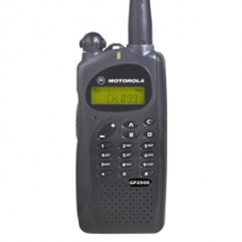


This radio has some software tuning, but a key difference between this and e.g. I did buy some "Li-Ion" batteries for the radio off AliExpress, but this turned out to be a lie, since the batteries I got were Ni-Mh.įinding a charger for this radio also appeared to be tricky, maybe some other radios charging cradle can be modified to work? GP2000 (VHF) specifications

If you have old batteries for these I suggest replacing the cells in them instead of discarding them. It's likely all batteries available are old stock. The issue with these radios is finding batteries, this seems to be one of those radios where demand is too low to justify third party batteries. The radio is separately calibrated for Alkaline batteries, presumably due to the higher source impedance of these batteries. The radio launched with NiCd, NiMh, and Alkaline (primary cell) battery packs, this is another feature more typical of a ham radio than a commercial radio. As usual I have the wrong version, Norwegian hams need 432-435 for repeater access and simplex, other EU countries probably want an even lower minimum frequency. The UHF variant is available as 400-440, and 435-480 MHz. This mode being available and seemingly always an option (no disable feature in the CPS) is probably why this radio is not FCC certified according to the stickers on my units. It also has a VFO mode with full keypad programming, this is very uncommon for professional gear but probably appreciated by dealers in developing countries that can save money by not buying cable kits and CPSes. Marketing materials highlight the smaller size as being better suited to this market, though users all over the world seem to appreciate a compact radio. It seems to have been launched around 1999, targeting the Asian markets. The GP2000 is a relatively low cost single band portable FM transceiver, while prefixed with GP its construction is a bit cheaper than the typical GP300 series radios. This post details how to modify the band split for a Motorola GP2000 UHF portable radio.


 0 kommentar(er)
0 kommentar(er)
